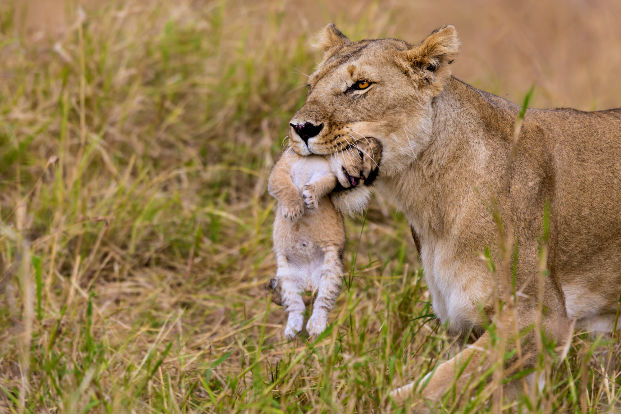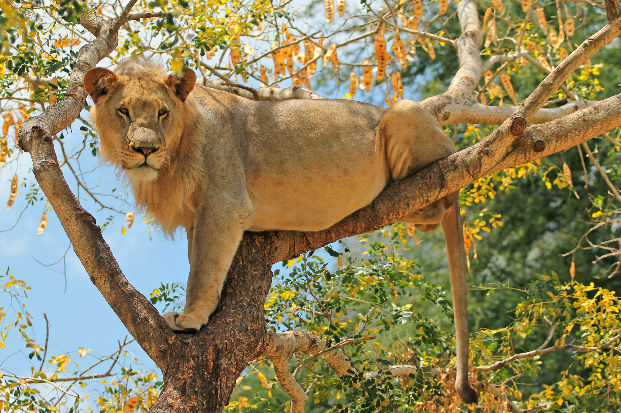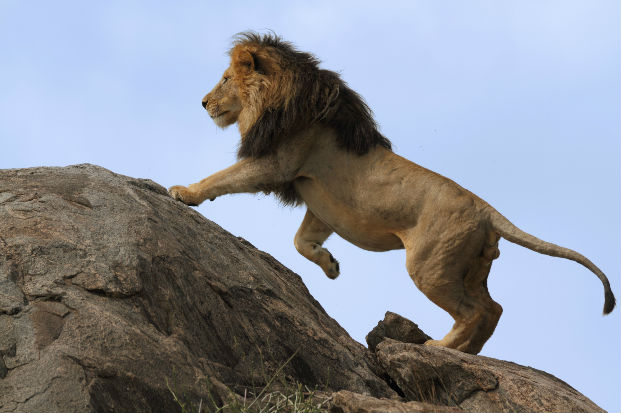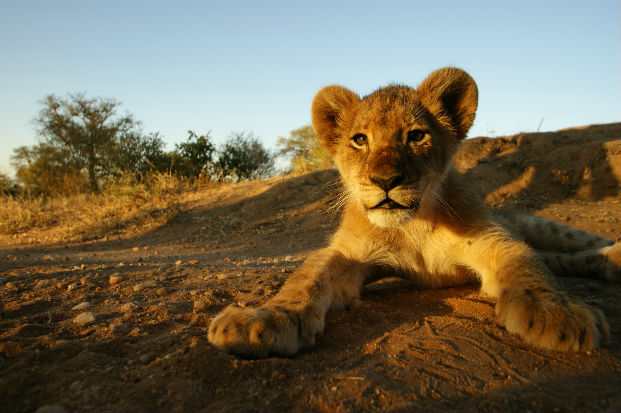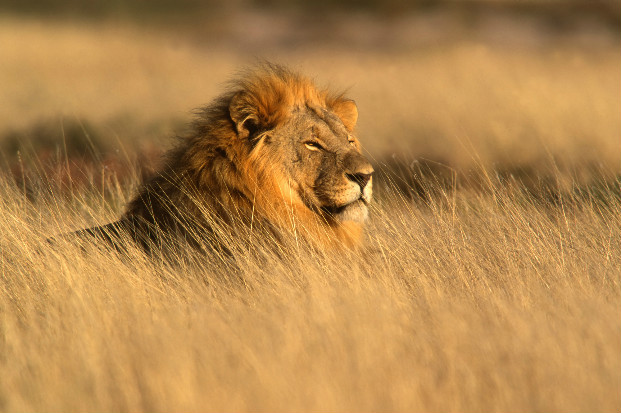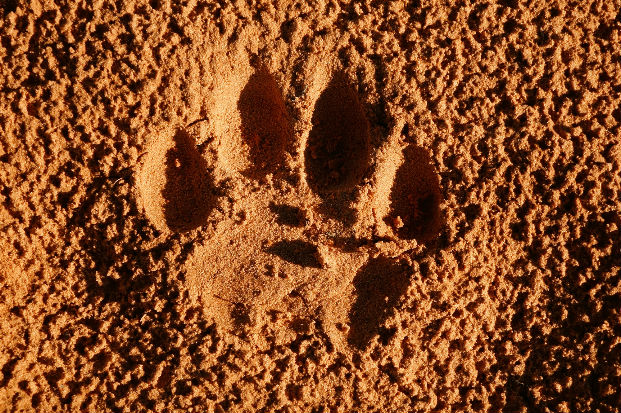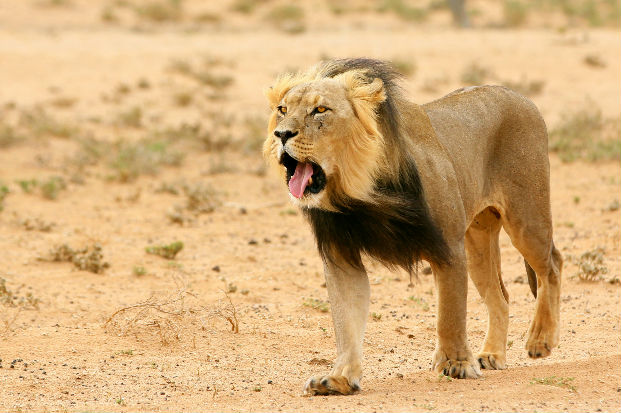Lions belong to the genus, Panthera, the same as leopards and tigers. The common characteristic is their ability to roar due to a voice box which is suspended by an elastic ligament (suspensorium) at the top of the windpipe. This permits vibration and sound magnification.
The lion, aka the “King of the Jungle” is the apex predator of the African savanna. It’s most active at night when it hunts. It does so to capitalise on its excellent vision which is six times better than mans after sundown.
The lion is one of the Big Five. To find out how this term came about and the other four animals that make up the Big Five please check out our article: 25 astonishing facts about Africa’s Big 5.
9 best facts about lions: Ranked
1. Lions will mate continuously for four days and nights averaging 2.2 times an hour with each coupling lasting approximately 20 seconds. For every cub that reaches the age of one the mother would have mated 3,000 times.
A newly coupled lion and lioness head to the relative solitude of the higher grounds in their new kingdom of Rwanda. Over the next four days, they’ll mate over 100 times a day. Source: Smithsonian Channel
2. A lion’s eye sight matches that of a human during the day but at night it’s over six times better. They are aware of their competitive advantage, so much so that even when they are hungry they stay inactive when it is negated by a full moon.
3. When a stalking lion is spotted by its prey it will sit up and act innocently.
4. Lions will not pass up the opportunity of a free meal and scavenge when they can. So much so they will follow up on hyena calls and vulture activity to see what it may offer.
5. A lion can run at a top speed of 22.2 metres per second which they can reach in five strides and maintain for up to 100m.
6. A lioness goes through a period of infertility after the pride is taken over by incoming males. This may be an adaptation to see if the males are not just passing through.
7. Lions regularly bring down prey two times their own body weight with some even tackling a buffalo which can weigh four times as much.
8. A lion’s roar can be 114 decibels and travel up to 8km in good conditions.
Source: Natural History Media
9. When new male lions take over a pride one of their first acts may be to kill all the cubs under one year old. This is to bring the females into heat quickly.
Discover more
So what’s it like to wake up in the middle of the night to find your tent surrounded by lions? Take a look at these carefully selected videos of lions taking up residence of unfenced camps.
Vote for the fact you find most fascinating
A lioness goes through a period of infertility after the pride is taken over by incoming males. This may be an adaptation to see if the males are not just passing through.
A lion’s roar can be 114 decibels and travel up to 8km in good conditions.
Lions will not pass up the opportunity of a free meal and scavenge when they can. So much so they will follow up on hyena calls and vulture activity to see what it may offer.
A lion can run at a top speed of 22.2 metres per second which they can reach in five strides and maintain for up to 100m.
When new male lions take over a pride one of their first acts may be to kill all the cubs under one year old. This is to bring the females into heat quickly.
When a stalking lion is spotted by its prey it will sit up and act innocently.
Lions regularly bring down prey two times their own body weight with some even tackling a buffalo which can weigh four times as much.
Lions will mate continuously for four days and nights averaging 2.2 times an hour with each coupling lasting approximately 20 seconds. For every cub that reaches the age of one the mother would have mated 3,000 times.
A lion’s eye sight matches that of a human during the day but at night it’s over six times better. They are aware of their competitive advantage, so much so that even when they are hungry they stay inactive when it is negated by a full moon.



